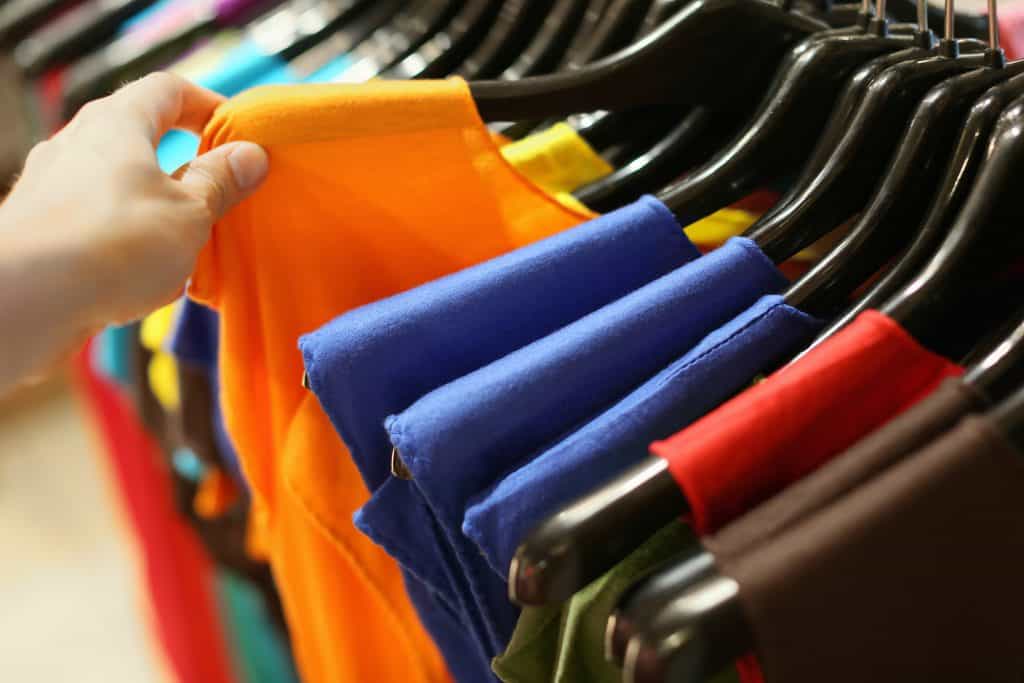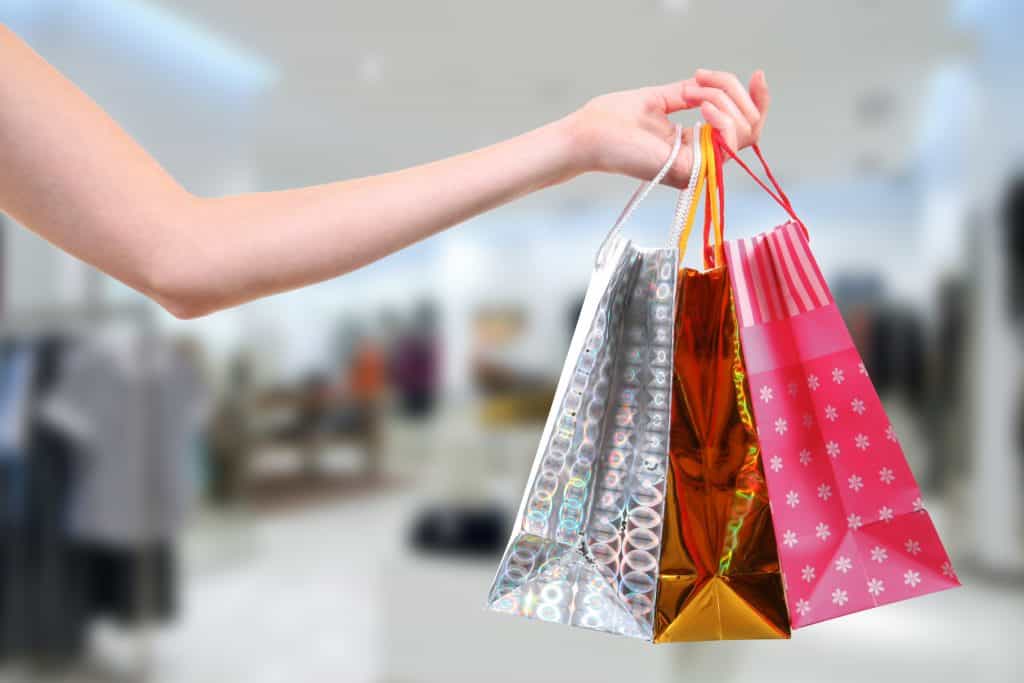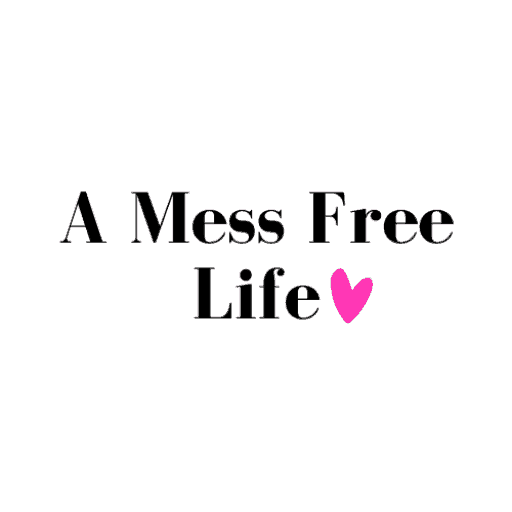A Mess Free Life may collect a share of sales or other compensation from the links on this page.
Have you ever wondered if your particular kind of crazy (possibly compulsive) shopping habits put you in the category of an emotional spender?
For years I wasn’t the least bit concerned about my shopping habits. I shopped when I felt the need.
The problem was I needed to shop a lot.
It wasn’t until I started getting out of debt and evaluating why I needed to shop to the extent I did, that I began to see a disturbing pattern to my shopping and my uncontrollable urge to spend money.
Table of Contents
HOW DO YOU KNOW IF YOU ARE AN EMOTIONAL SPENDER?

Let’s start with an emotional spending definition. Investopedia defines emotional spending as spending that occurs when an individual spends money for the sole purpose of improving a mood.
If it were just that, it would be so much easier to control for the countless people who are emotional spenders.
The emotional spending statistics paint a more complex picture of both the emotional spender and the causes of compulsive shopping.
In 2006, Stanford School of Medicine conducted a research study and determined that 5.6 percent of adults in the US are considered “over shoppers.” That translates to 17 million people. But another survey by Ridgway et al. conducted just two years later, showed significantly higher numbers of 28 million American over shoppers.
No matter which American overspending statistics you believe, the trend continues to rise meaning more and more people are sucked into the vortex of overspending and overshopping.
BUT WHY?
There are as many reasons why someone shops as there are people on the planet.
But a recent study by the UK based moneysupermarket.com and consumer behavior experts MindLab pulled the curtain back and provides us with some great insight into emotional spending, impulse purchases and why we shop as much as we do.
The study suggested that some of us are prone to emotional spending when we are either feeling bored, stressed or unhappy. These psychological reasons for overspending can vary from exhibiting mild traits to more severe ones.
Not that surprising is it?
What might surprise you is there are actually 10 telltale signs of emotional spending that women fall into. See if any of these categories resonate for you:
1. YOU SHOP TO FEEL BETTER ABOUT YOURSELF
Emotional spenders who fall into this category typically grew up with unreasonably high expectations of themselves. Unable to meet these unrealistic expectations their self-esteem takes a nosedive, and they find themselves anxious and depressed. To lift themselves out of this state of depression they immerse themselves in buying and the high it brings with it.
2. YOU SHOP AS AN AVOIDANCE TACTIC
Do you have a problem that needs solving or maybe you should be at the dentist having your tooth fixed, but instead you find yourself dancing up the aisles at Nordstrom’s? This is the tactic of the avoidance shopper. You know you should be doing something else, but instead, you go shopping because let’s face it, it feels better than facing the music and fixing whatever problem is in front of you at the moment.
3. YOU USE SHOPPING AS A WEAPON TO EXPRESS ANGER OR REVENGE
Are you afraid to confront someone? Maybe your husband continually promises to get home early and spend more time with kids but never follows through? If you head to the store or online as a way to express your anger or to “get back at him” because you know he’ll be pissed off at your current shopping haul, you’re using shopping as a weapon.
4. YOU SHOP AS A WAY TO HOLD ONTO OTHERS
Do you find yourself in a never-ending cycle of buying lavish gifts and presents for other people? Are you often told how generous you are? But deep down are you tieing an invisible string to you and the receiver with the expectation they will be somehow beholden to you? If so, you’re using shopping as a way to deal with your intense fear of abandonment.
5. YOU SHOP TO SOOTHE YOURSELF
If you use shopping to fix your mood whether it be boredom, loneliness, sad or scared then you’re using shopping as a way to soothe yourself.
6. YOU SHOP AS A WAY TO PROJECT AN IMAGE OF WEALTH OR POWER
If you have this belief that your personal value, happiness, and self-esteem is directly proportional to how much stuff you own (and the quality of that stuff), then you, my friend use shopping to project an image of wealth and power.
7. YOU OVERSHOP TO KEEP UP YOUR IMAGE
Believe clothes make the woman or image is everything? Are outward appearances more important than what’s inside? Well if you’re shaking your head in agreement, you shop to keep that facade up so you can fit into the culture of an appearance-obsessed society.
8. YOU OVERSHOP IN RESPONSE TO STRESS, LOSS OR TRAUMA
If you often find yourself using shopping to relieve the pressure built up because of stress, loss or trauma, you’re not alone. Many people who have been subjected to abuse or neglect in their childhood, are a caregiver to an elderly or sick family member or have suffered some kind of trauma like the loss of a child, often turn to this type of emotional spending to let the pressure out and relieve the stress associated with these events.
9. YOU OVERSHOP AS A WAY TO AVOID ANOTHER ADDICTION
Some over shoppers and emotional spenders also struggle with other forms of addiction. Possibly either drugs, alcohol, food or even gambling. If you chose shopping over another addiction because you see it as the lesser of two evils, you use shopping as the justification to avoid something equally as damaging to yourself.
10. YOU SHOP TO FEEL IN CONTROL
If shopping is the only time you feel like you can manage your life, you’re likely using shopping to feel more in control of your life. If you see yourself with very few options, but shopping gives you some degree of control be careful as with any addiction it soon controls you.
Everyone has their reasons for buying that handbag or booking that weekend away in the country, but what they probably don’t realize is that a situation three hours earlier, unrelated to the purchase, prompted them to buy it.
That’s why learning about and understanding what triggers you to shop is so vital to moving beyond emotional spending. But to do this, we must go all the way back to the beginning.
It’s time to start looking at the messages, scripts, and behaviors you observed as a child to see how it impacts you today in the present.
WHERE IT ALL BEGAN
What we learn as a child we remember as an adult. But more than that what we remember we usually embrace, and it becomes part of our behavior.
Whenever we engage in any type of shopping behaviors – cutting coupons, trying on clothing in a store, whipping out the credit card to make the purchase, checking a price tag – you’re acting from a set of attitudes and beliefs that you learned when you were very young.
More than likely you’re not consciously aware of these messages you received as a child – but believe me, they are there working in the background forming the actions, beliefs, and scripts you carry with you in the present.
Unfortunately, as children, we don’t have the ability to discern external factors in a way that doesn’t leave a negative impact.
For example, as a child my parents were unable to purchase things I wanted; we were poor by all standards. Even at Christmas, I was often disappointed by the gifts they would give me, mainly because they weren’t what I wanted. This left a deep scar in me because I believed that because I didn’t get what I wanted, then I must be unworthy. Those feelings then spurred my over-shopping and over-indulgent behaviors resulting in my credit card debt.
Because what we learn is formed in our mind as a child, we are not able to fully appreciate the complexities of life, and we develop money scripts and stories that are oversimplified generalizations that are not always true.
To successfully change and rewrite your money story and your relationship to money, you need to discover your money scripts and how each of these beliefs impacts your financial behaviors.
The goal is to bring it all out into the open, so you can decide whether or not a belief serves you well or not and if not, how to adopt a new belief that will serve you better. Until you uncover these beliefs, you will find making a permanent change in your financial habits challenging.
I speak from experience when I say this. I tried many times to stop my emotional spending and get out of debt and change my behavior. But it wasn’t until I went through the exercises I’m sharing with you, that my relationship and behavior changed permanently.
TRAVELING BACK IN TIME TO UNCOVER THE TRUTHS ABOUT YOUR EMOTIONAL SPENDING
One of the ways to begin to understand your emotional spending triggers and how to then correct or make another choice when confronted with spending desires is to go back in time and evaluate your money beliefs.
Grab a notebook and pen and print out the questionnaire found in the Free Resource Library.
If you don’t have the access code, you can request it below. Make sure to come back often as I’m always adding new material to the vault.
Now sit in a quiet location and read each question carefully. Write down your thoughts and insights.
I’ve categorized these questions to help you think about your behavior, reasoning, feelings, and consequences but you can answer them in any order you like.
SHOPPING BEHAVIOR
- Do you find yourself spending more time shopping than you want?
- Do you find yourself spending more money than you want or can afford, whether in a store, on the Internet, in catalogs, or on shopping channels?
- Do you often go on buying binges?
- Do you have a lot of items still in their packaging or with the tags still on?
- Does money “burn a hole” in your pocket?
THE WHY OF SHOPPING
- Do you go shopping as a quick fix when you’ve got the blues?
- Do you often buy things because you think they’ll make you more like your ideal image?
- Does something inside of you sometimes push you to shop?
- Do you shop to avoid doing something else in your life?
- Do you often find yourself shopping out of boredom?
HOW YOU FEEL BEFORE, DURING AND AFTER
- Do you go on buying binges when you’re lonely, anxious, disappointed, depressed, or angry?
- Do you feel “high” when you go on a buying binge?
- Do you feel anxious, guilty, or ashamed after shopping?
ADDICTIVE, COMPULSIVE OR IMPULSIVE ASPECTS TO YOUR SHOPPING
- Do you buy things even though you don’t need them?
- Do you buy things even though you can’t afford them?
- Do you ever feel agitated, irritable, or on edge when you haven’t been able to buy something?
- Have you tried to stop overshopping but have been unable to?
SHAME, DENIAL, AND AVOIDANCE
- Do you hide your purchases from family or friends?
- Do you lie when asked if you’ve been out shopping?
- Are you not opening your mail or answering your phone because you don’t want to deal with creditors and the consequences of your overspending?
- Do you not know, or not want to admit, how much you shop?
FINANCIAL CONSEQUENCES
- Do you worry about your spending habits but still go out and spend money shopping?
- Do you find that the use of credit has increased over time?
- Have any of your purchases ever resulted in legal problems (shoplifting, stealing)?
- Have any of your purchases ever resulted in problems with your bank?
OTHER CONSEQUENCES
- Are your relationships suffering because of your buying?
- Has the urge to buy something ever caused you to miss a social engagement?
- Has your job performance suffered because of your buying?
- Is your home cluttered because of how much you buy?
While I would love to tell you that if answer yes to more than 15 of these questions then you’re an emotional spender, it isn’t that simple.
One answer in the affirmative might be enough to know you’re headed down a dangerous path, or you’re already there.
But this next question often hits home for so many people who suffer from emotional spending and its consequences.
WOULD LIFE BE BETTER, RICHER, MORE MEANINGFUL FOR YOU IF YOU WERE SHOPPING LESS?
Sometimes when in the throws of our shopping addiction we lose sight of what’s missing in our life.
When we find the courage and strength to change our script and begin to pull ourselves away from the shopping, we find there’s room to start creating the life we really want.
WHAT DOES A LIFE BEYOND SHOPPING LOOK LIKE?
There is a life beyond shopping for those of you who suffer from the consequences of impulse shopping, overshopping and emotional shopping.
The challenge is figuring out what that looks like.
I remember vividly as I struggled to create a life that didn’t include going to the mall every weekend with my daughter. It took a lot of thinking and exploring to find new activities that filled me up in a way that shopping could never do.
It’s a somewhat trial and error approach we have to take to find the right combination that is right for you.
But it starts with simply being willing to even consider life beyond shopping and to start tapping into other activities you pushed to the side when you made shopping your number one recreational activity.
For me this included things like taking a photography course, studying yoga and meditation, buying a telescope and learning more about the wonderful universe we live in, taking cooking classes and so much more.
The realization for me was that there were so many amazing things to do that were so much more fun than the fake fun I was having.
Fake fun is fun that does not fill you up, and shopping falls squarely in this category.
EXAMINING YOUR ENTIRE LIFE
In my EMBRACE Lifestyle Training Program, we spend a lot of time discussing all aspects of our life so we can examine it fully and determine how to improve our lives, so we are not so prone to emotional spending.
We peel back the curtain on our relationships, how we have fun, how the work we do in the world makes us feel and our religious or spiritual practices.
By examining these key areas, we can find meaningful alternatives to overspending.
If you are curious about the EMBRACE Lifestyle Program and if it could help you, like the thousands of other women it has helped, go here to learn more.
If you’re ready to dive into what EMBRACE has to offer, start with the mini course and see if it’s right for you.  CONCLUSION
CONCLUSION
Emotional spending is a growing epidemic with over 28 million people in the United States alone that sees themselves as a shopper who is buying things to fill a void. And, as much as the men in your life might think they are immune to compulsive spending therapy, research reveals that men are just as likely as women to overshop and emotionally spend.
The reasons one chooses to overshop typically fall into ten distinct categories that run the range of shopping to feel better about oneself to trying to portray a certain image to use it as a weapon against someone.
No matter what the reason, there are things you can begin to do to see where your thoughts, beliefs, and actions came from around emotional spending so you can begin to create a new life – one beyond shopping.










